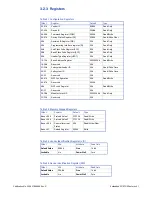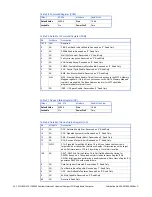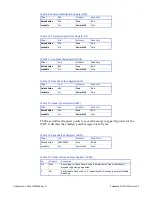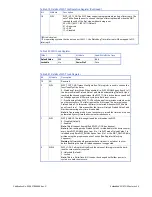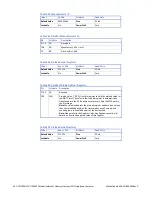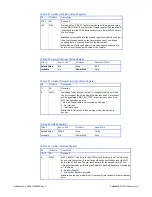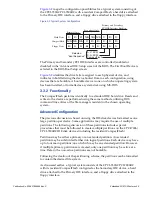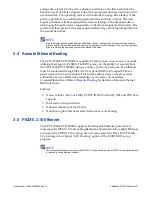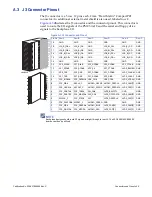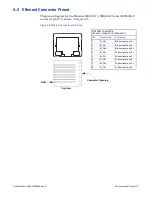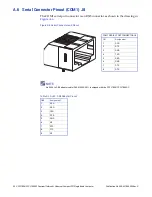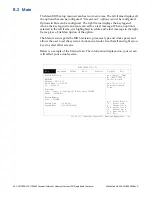
Publication No. 500-657806-000 Rev. G
Embedded PC/RTOS Features 51
assigns drive letter C to the active primary partition on the first hard disk (the
boot device). Drive D is assigned to the first recognized primary partition on the
next hard disk. The operating system will continue to assign drive letters to the
primary partitions in an alternating fashion between the two drives. The next
logical partitions will be assigned drive letters starting on the first hard drive,
lettering each logical device sequentially, until all are assigned a drive letter. The
system will then perform the same sequential lettering of each logical partition on
the second hard disk.
NOTE
Drive letter changes caused by adding an additional drive or changing the initial partitioning scheme
may cause difficulties with an operating system installed prior to the changes. Plan your configuration
prior to installing the operating system to minimize difficulties.
3.4 Remote Ethernet Booting
The CPCI-7806/CPCI-7806RC is capable of booting from a server over a network
utilizing the Argon LAN BIOS. The BIOS gives you the ability to remotely boot
the CPCI-7806/CPCI-7806RC using a variety of network protocols. The Ethernet
must be connected through the LAN front panel (RJ45) or CompactPCI back
panel connector to boot remotely. This feature allows users to create systems
without the worry of disk drive reliability, or the extra cost of adding
CompactFlash drives. Refer to
for details on Remote Ethernet
BIOS selections.
Features:
• Netware (802.1, 802.3 or EthII), TCP/IP (DHCP or BootP), RPL and PXE boot
support
• Boot sector virus protection
• Optional disabling of local boots
• Dual-boot option lets users select network or local booting
3.5 PICMG 2.16 Ethernet
The CPCI-7806/CPCI-7806RC supports Dual Gigabit Ethernet ports that are
routed per the PICMG 2.16 Switching Backplane Specification. To enable Ethernet
to support the PICMG 2.16 routing, the user must select the ‘Rear Port’ PICMG
2.16 routing in the Chipset ‘LAN Routing’ option of the CMOS BIOS set up
program.
NOTE
The system backplane must support the PICMG 2.16 specification, and a PICMG 2.16 compatible switch
is required for each ethernet channel.





